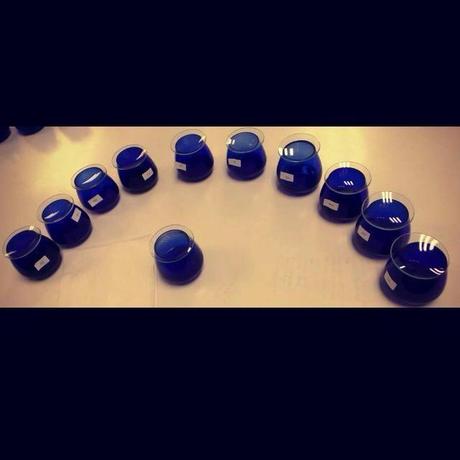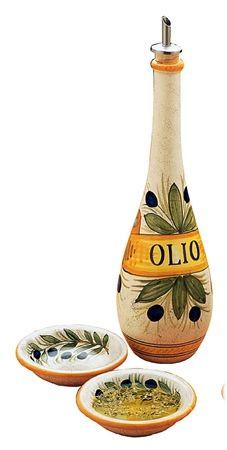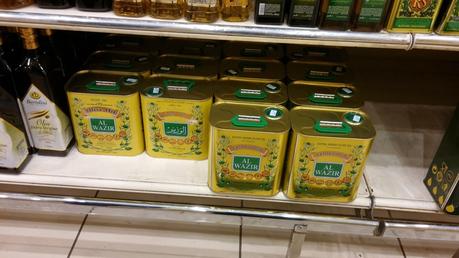Everything you need to know about Olive Oil
(Part 2)
We continue in this post, part 2 of the Interview series with the Olive Oil Expert. This time it coverts the topic of the sensory evaluation of Olive Oil.
Sensory Aspect of Olive Oil

Olive Oil tasting should be done in tapered (Dark Blue) glasses.
WHAT COLOR IS GOOD OLIVE OIL? The color of olive oil is not an indication of quality. Choose olive oil for taste not for its color.HOW TO TASTE OLIVE OIL?
- Pour a small amount of oil (15 mL) into a small tapered (Dark Blue) glass.
- Hold the glass in one hand and use the other one to cover the glass while swirling the oil and warming the cup with the palm of your hand to release its aroma.
- Uncover the glass and inhale (one simple breath) from the top of the glass then cover the cup immediately. This first impression will give you an information (almost 70%) about the aroma.
- Inhale 3 separate times, with pauses in between. Then slurp the oil (This is done by sipping a small amount of oil into your mouth while “sipping” some air as well). Finish by swallowing the oil and noticing if it leaves a stinging sensation in your throat.
Fruitiness, pungency and bitterness are three positive attributes of olive oil.
HOW TO STORE OLIVE OIL? Olive oil should be stored in a cool and dark place away from heat and light.

SHOULD PEOPLE BUY UNFILTERED OR FILTERED OLIVE OIL?
It is a matter of personal preference. Unfiltered olive oil is cloudy. Some people think that cloudy oil is healthier because it is “less processed”. Unfiltered oil has a shorter shelf life and should be consumed quickly.

About the Expert:
Mr. Mohammad Kobayter is the Quality Assurance and Logistics Manager at KOBAYTER S.A. in Malaga -Spain. Kobayter holds a Bachelor of Science in Food Science and Management from the American University of Beirut (AUB) and he is a certified expert in virgin olive oil tasting (from the University of Jaen, Spain). He previously worked as a Production manager assistant at KOBAYTER FRERES S.A.L. in Lebanon. (Alwazir historic Ad )
